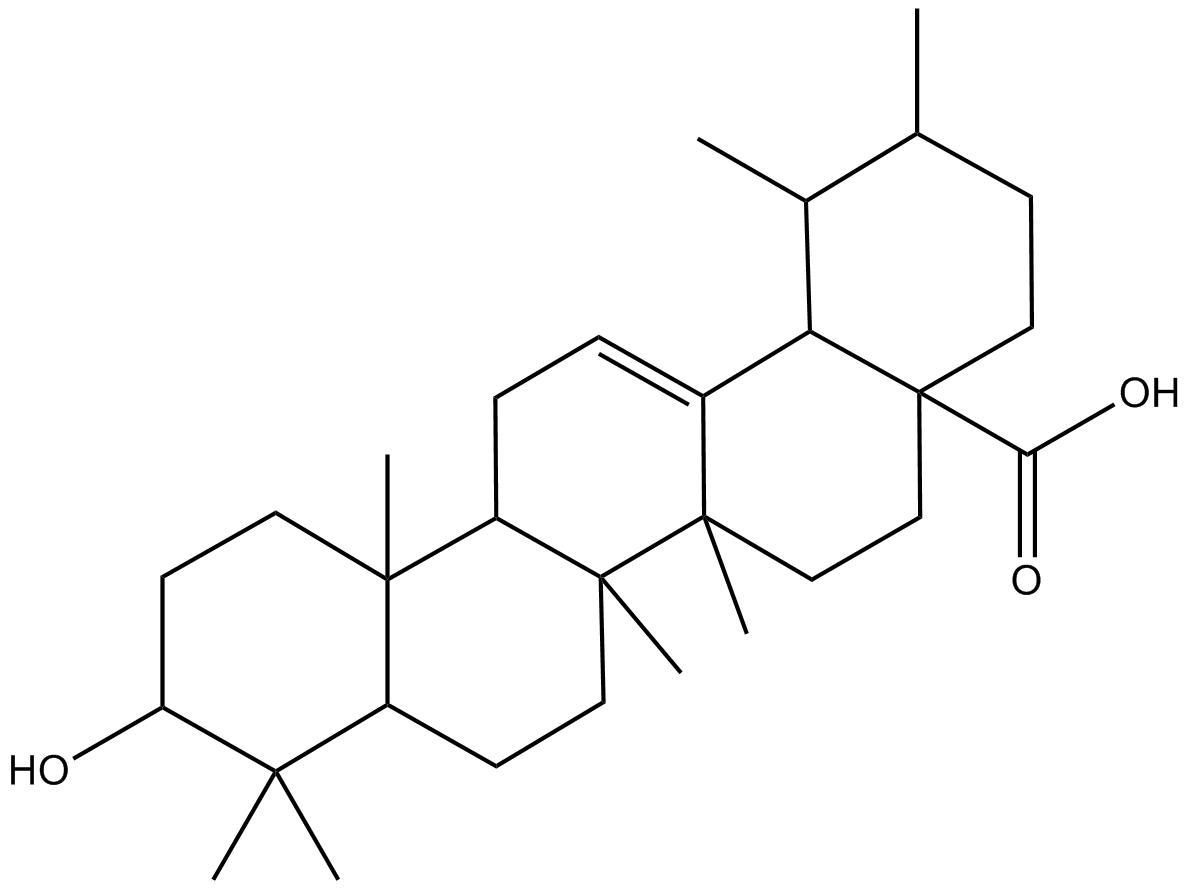Ursolic acid (Synonyms: Bungeolic Acid, Maerotaine, Malol, NSC 4060, NSC 167406, Prunol) |
| Catalog No.GN10390 |
Un triterpenoide con diversas actividades biológicas.
Products are for research use only. Not for human use. We do not sell to patients.

Cas No.: 77-52-1
Sample solution is provided at 25 µL, 10mM.
IC50: 2.5 μg/mL for P3HR1 cells; 17.79 μg/mL for myelogenous leukemia K562 cells
Ursolic acid, an ursane-type pentacyclic triterpenic acid, belongs to the cyclosqualenoid family, has been reported to be useful in cancer prevention and treatment. Several inflammatory signaling cascades including nuclear factor-kB and cyclooxygenase-2 have been linked with different stages of cancer progression.
In vitro: Ursolic acid was reported to suppress the proliferation of a number of tumor cells, induce apoptosis and inhibit metastasis, tumor promotion, and angiogenesis. Ursolic acid could inhibit NF-kB activation induced by carcinogenic agents through the suppression of IkBa kinase and p65/RelA phosphorylation [1].
In vivo: In vivo, ursolic acid has been reported to inhibit tumor growth in various cancer animal models. In nude mice, ursolic acid treatment for 6 weeks inhibited the growth of DU145 cells without any significant effect on body weight. In addition, ursolic acid treatment produced chemopreventive effects in the transgenic adenocarcinoma of mouse prostate mouse model [1].
Clinical trial: Sixty-three subjects received a single dose of ursolic acid liposomes. The clinical results showed that liposomal ursolic acid had manageable toxicities with MTD of 98 mg/m2. The DLT were primarily diarrhea and hepatotoxicity. Additionally, ursolic acid liposomeal formulation had a linear pharmacokinetic profile [1].
Reference:
[1] Shanmugam MK,Dai X,Kumar AP,Tan BK,Sethi G,Bishayee A. Ursolic acid in cancer prevention and treatment: molecular targets, pharmacokinetics and clinical studies. Biochem Pharmacol.2013 Jun 1;85(11):1579-87.
Average Rating: 5 (Based on Reviews and 30 reference(s) in Google Scholar.)
GLPBIO products are for RESEARCH USE ONLY. Please make sure your review or question is research based.
Required fields are marked with *




















